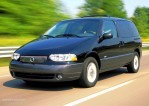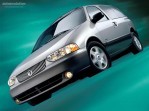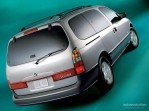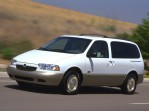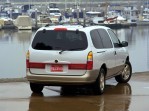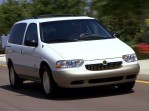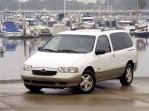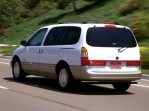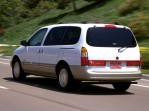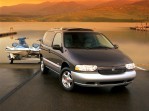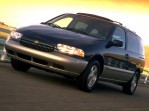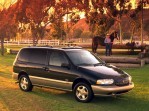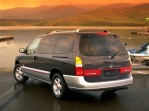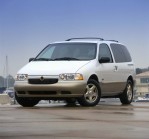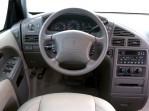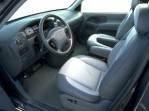Body style: Van
Segment: Large MPV
Production years: 1998, 1999, 2000, 2001, 2002
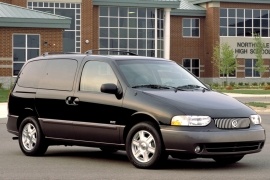 18 Photos
18 PhotosIn 1992, Nissan and Ford Motor Corporation launched the Mercury Villager at the Chicago Auto Show. Six years later, the Villager received a new generation to bump its sales.
While both General Motors and Chrysler already had a good start for the rising minivan market, Ford was lacking behind. At the same time, Nissan had a very good platform fit for building an MPV on it. By joining their forces, the result was the Mercury Villager. It wasn't the first jointly developed product by the Japanese and American companies.
The Villager was distinguished by its siblings due to its “waterfall” grille design, with vertical chromed bars. While sharing the wheelbase with its predecessor, the 1999 Villager was longer. Since it was considered as a premium version when compared to its Ford sibling, it was fitted as standard with two sliding doors. In the back, it featured the same corner-mounted taillights as the Nissan Quest, but with a red&amber molding on the tailgate. The rear window could have been opened independently from the tailgate.
The dashboard and the door panels received a two-tone design. To clear the path between the left and right side of the vehicle, the Villager kept the gear-selector mounted on the steering column. On the center stack, the car-maker installed the stereo and climate unit controls along with other storage compartments.
The Villager was based on the FWD platform from the Nissan Maxima. It also had a modified version of the 3.3-liter V6 engine from the medium-sized Japanese vehicle that was sold in the U.S. The only gearbox available was a Jatco 4-speed automatic.
MERCURY Villager 1998, 1999, 2000, 2001, 2002
- 3.3L V6 4AT (173 HP)
MERCURY Villager
3.3L V6 4AT (173 HP)
ENGINE SPECS - 3.3L V6 4AT (173 HP) | |
|---|---|
| Cylinders: | V6 |
| Displacement: | 3275 cm3 |
| Power: | 127 KW @ 4800 RPM 173 HP @ 4800 RPM 170 BHP @ 4800 RPM |
| Torque: | 200 lb-ft @ 2800 RPM 271 Nm @ 2800 RPM |
| Fuel System: | Multipoint Injection |
| Fuel: | Gasoline |
PERFORMANCE SPECS | |
|---|---|
| Top Speed: | 108.7 mph (175 km/h) |
| Acceleration 0-62 Mph (0-100 kph): | 11 s |
TRANSMISSION SPECS | |
|---|---|
| Drive Type: | Front Wheel Drive |
| Gearbox: | 4-automatic speed |
BRAKES SPECS | |
|---|---|
| Front: | Ventilated Discs |
| Rear: | Drums |
TIRES SPECS | |
|---|---|
| Tire Size: | 215/75 R15 |
DIMENSIONS | |
|---|---|
| Length: | 194.9 in (4950 mm) |
| Width: | 74.8 in (1900 mm) |
| Height: | 70.1 in (1781 mm) |
| Front/rear Track: | 63.4/63.4 in (1,610/1,610 mm) |
| Wheelbase: | 112.2 in (2850 mm) |
| Ground Clearance: | 5.5 in (140 mm) |
| Cargo Volume: | 126.4 cuFT (3579 L) |
| Aerodynamics (Cd): | 0.35 |
WEIGHT SPECS | |
|---|---|
| Unladen Weight: | 4002.1 lbs (1815 kg) |
FUEL ECONOMY (NEDC) | |
|---|---|
| City: | 17 mpg US (13.8 L/100Km) |
| Highway: | 24 mpg US (9.8 L/100Km) |
| Combined: | 19.9 mpg US (11.8 L/100Km) |
| CO2 Emissions: | 281 g/km |
